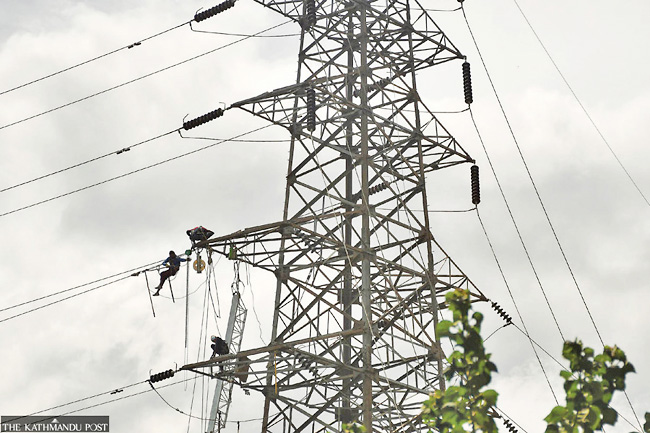KATHMANDU POST – Nepal’s overdependence on imports has led to a swelling of its balance of payment deficit and rapid depletion of foreign exchange reserves.
Imports constitute nearly 90 per cent of the country’s total international trade, and with Nepal lacking export materials, the balance of payment gap has been huge.
Since export earnings are limited, the country largely relies on inflows of remittances sent by the migrant workers to fill the gap of foreign exchange requirements to sustain rising imports.
But the situation could change in the near future. The country is set to have a promising export item – electricity.
In November last year, the Nepal Electricity Authority (NEA) started exporting its surplus power to India’s energy exchange market. Nepal earned around MPR180 million by selling electricity generated from two hydropower projects – the 24MW Trishuli Hydropower Project and the 15MW Devighat Hydropower Project – for over a month, according to the NEA.

On Wednesday, the NEA started exporting surplus energy to India.
“We started selling 37.7MW electricity to Indian buyers from 12.15am on Thursday,” said spokesperson for the Nepal Electricity Authority Suresh Bhattarai. “We have also sent a proposal to India Energy Exchange (IEX) for selling equivalent power on Friday.”
In April this year, two important developments took place between Nepal and India which paved the way for Nepal to gain wider market access to India’s vast energy market and potentially certain parts of the entire South Asian region.
Prime Minister Sher Bahadur Deuba and his Indian counterpart Narendra Modi agreed on the Joint Vision Statement on Power Sector Cooperation which talks about strengthening cooperation on joint development of power generation projects in Nepal, and development of cross-border transmission infrastructure and bi-directional power trade with appropriate access to electricity markets in both countries based on mutual benefits.
The two sides also agreed to expand cooperation in the power sector to include their partner countries under the Bangladesh, Bhutan, India and Nepal (BBIN) framework, subject to mutually agreed upon terms and conditions between all involved parties.
On April 6, India allowed the NEA to sell additional 325MW of electricity generated from four hydel projects – Kali Gandaki (144MW), Middle Marsyangdi (70MW), and Marsyangdi (69MW) – all developed by the NEA, and Likhu 4 Hydropower Project (52.4MW) developed by the private sector.
With this, during the upcoming monsoon season, Nepal will be able to export 364MW of electricity, according to the power monopoly.
“Based on existing agreements with Indian authorities, we can sell electricity worth around NPR12 – 13 billion in the upcoming wet season,” said NEA managing director Kulman Ghising.
“It will help the country earn foreign exchange.”
He believes the NEA could export more power in the wet season as more power projects are awaiting trade approval from the Indian government.
The export of electricity is becoming a real option at a time when the country is facing a balance of payments deficit of NPR268.26 billion in the first three quarters of this fiscal against a surplus of NPR42.54 billion in the same period of the previous year, according to the Nepal Rastra Bank.





